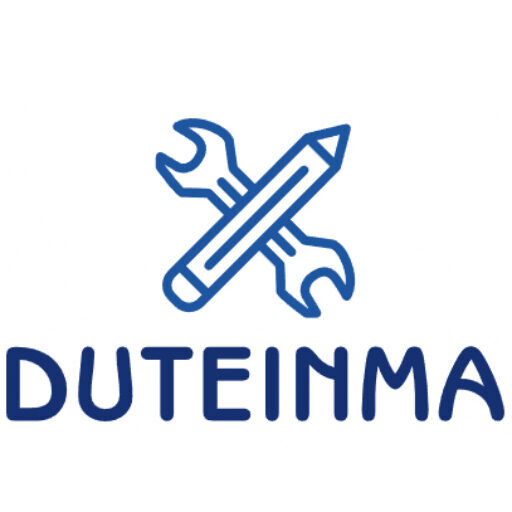En el bullicioso mundo de la logística, La atención a menudo brilla en equipos principales como carretillas elevadoras y sistemas de transporte. Sin embargo, Son los componentes más pequeños, accesorios de almacén logísticos, que a menudo juegan papeles fundamentales para garantizar operaciones sin problemas. Estos accesorios, Aunque a veces se pasa por alto, son esenciales para optimizar el flujo de trabajo, Mejora de la seguridad, y aumentar la eficiencia general.
¿Qué son los accesorios de almacén de logística?? Una descripción general completa
Accesorios para almacenes logísticos Se refieren a herramientas y componentes complementarios que respaldan las operaciones principales dentro de un almacén.. Son parte integral de varias funciones., incluido:
Recepción: Elementos como niveladores de muelle y parachoques facilitan la descarga segura y eficiente de mercancías..
Almacenamiento: Accesorios como soportes para palés y barras de seguridad garantizan un almacenamiento seguro y organizado..
Recogida y embalaje: Herramientas como portaetiquetas y carros de recolección agilizan los procesos de cumplimiento de pedidos.
Envío: Equipos como dispensadores de film estirable y básculas de envío ayudan a preparar los productos para su envío..
Control de inventario: Los lectores de códigos de barras y las etiquetas RFID ayudan a realizar un seguimiento preciso del inventario.
Estos accesorios no son meros complementos; Son vitales para mejorar la funcionalidad de los sistemas de almacén primario..
-904x1024.jpg)
El propósito de los accesorios para almacenes logísticos: Mejora de la eficiencia y la seguridad
Las funciones primarias de accesorios para almacén logístico incluir:
- Maximizar la utilización del espacio: Accesorios como entrepisos y sistemas de estanterías modulares permiten el almacenamiento vertical., optimizando el espacio disponible.
- Mejorando la seguridad: Redes de seguridad, barandillas, y las alfombrillas antideslizantes ayudan a prevenir accidentes y lesiones.
- Mejora de la eficiencia del flujo de trabajo: Herramientas como estaciones de trabajo móviles y herramientas de selección ergonómicas reducen el trabajo manual y aceleran los procesos..
- Garantizar la precisión del inventario: La implementación de sistemas de etiquetado y contenedores de inventario ayuda a una gestión precisa del stock..
Al integrar estos accesorios, Los almacenes pueden lograr un entorno operativo más ágil y seguro..
Tipos comunes de accesorios para almacenes logísticos y sus aplicaciones
-720x1024.jpg)
Comprender la variedad de accesorios disponibles puede ayudar a seleccionar las herramientas adecuadas para necesidades específicas.:
Soportes para Tarimas y Barras de Seguridad: Proporcionar soporte adicional a los pallets., evitando la flacidez y posibles colapsos.
Portaetiquetas y Señalización: Facilitar una fácil identificación de ubicaciones de almacenamiento e inventario., reducir los errores de selección.
Contenedores y Contenedores Modulares: Ofrezca soluciones de almacenamiento organizadas para piezas y componentes pequeños..
Accesorios para muelles: Elementos como sellos de muelle y refugios protegen las mercancías de factores ambientales durante la carga y descarga..
Equipo de seguridad: Incluye artículos como extintores., botiquines de primeros auxilios, y señales de salida de emergencia para garantizar la seguridad en el lugar de trabajo.
Cada accesorio tiene un propósito específico., Contribuir a la eficiencia y seguridad general de las operaciones de almacén..
Consejos prácticos para seleccionar accesorios para almacenes logísticos
Elegir los accesorios adecuados implica una cuidadosa consideración:
Evaluar las necesidades operativas: Identificar áreas donde se puede mejorar la eficiencia o mitigar los riesgos de seguridad..
Evaluar la compatibilidad: Garantizar que los accesorios sean compatibles con los sistemas y equipos existentes..
Considere la durabilidad y la calidad: Invierta en accesorios de alta calidad que puedan soportar las demandas del entorno del almacén..
Presupuestar adecuadamente: Equilibrar el costo con el potencial retorno de la inversión en términos de ganancias de eficiencia y mejoras de seguridad..
Consulta con expertos: Busque asesoramiento de profesionales de la industria o proveedores para tomar decisiones informadas..
Implementar los accesorios adecuados puede generar mejoras significativas en las operaciones del almacén.
.jpg)
Estudio de caso: Transformando un almacén de comercio electrónico
Fondo: Una empresa de comercio electrónico enfrentó desafíos con la velocidad de cumplimiento de pedidos y la precisión del inventario..
Solución:
Estanterías modulares implementadas: Permitió una mejor organización y un acceso más rápido a los productos..
Se introdujeron los carros de recolección móviles: Permitió a los trabajadores recolectar múltiples pedidos simultáneamente, reduciendo el tiempo de viaje.
Se agregaron señalización y etiquetado claros: Navegación mejorada dentro del almacén., minimizando errores.
Resultados:
Tiempo de cumplimiento del pedido: Reducido por 30%.
Precisión del inventario: Mejorado por 25%.
Satisfacción de los empleados: Aumentó debido a la reducción del esfuerzo físico y a flujos de trabajo más claros.
Este caso ilustra los beneficios tangibles de integrar accesorios de almacén adecuados.
.jpg)
-1008x1024.jpg)
Recomendaciones de expertos: Desarrollo de un plan de accesorios de almacén eficaz
Los expertos sugieren los siguientes pasos:
Realizar un análisis del flujo de trabajo: Comprender los procesos actuales para identificar cuellos de botella y áreas de mejora..
Priorizar la seguridad: Asegúrese de que los accesorios de seguridad estén en su lugar y se mantengan regularmente..
Plan de escalabilidad: Elija accesorios que puedan adaptarse al crecimiento futuro o cambios en las operaciones.
Personal del tren: Proporcionar formación sobre el uso y mantenimiento adecuados de los accesorios para maximizar su eficacia..
Siguiendo estas recomendaciones, Los almacenes pueden crear un entorno de trabajo más eficiente y seguro..
-1024x700.jpg)
Información sobre la industria y soporte de datos
Según un informe de Módulo, La integración de accesorios de almacén adecuados puede llevar a:
Ganancias de eficiencia: Arriba a 40% mejora en las operaciones de recogida y embalaje.
Optimización del espacio: Capacidad de almacenamiento mejorada mediante la utilización del espacio vertical.
Mejoras de seguridad: Reducción de accidentes laborales gracias a mejores medidas de seguridad.
Estas estadísticas subrayan la importancia de invertir en los accesorios de almacén adecuados.
Conclusión: Accesorios para almacenes logísticos: la clave para la excelencia operativa
En conclusión, Los accesorios del almacén logístico juegan un papel crucial en la mejora de la eficiencia., seguridad, y desempeño general de las operaciones de almacén. Seleccionando e integrando cuidadosamente estas herramientas, Las empresas pueden lograr mejoras significativas en la productividad y la satisfacción de los empleados..

.jpg)